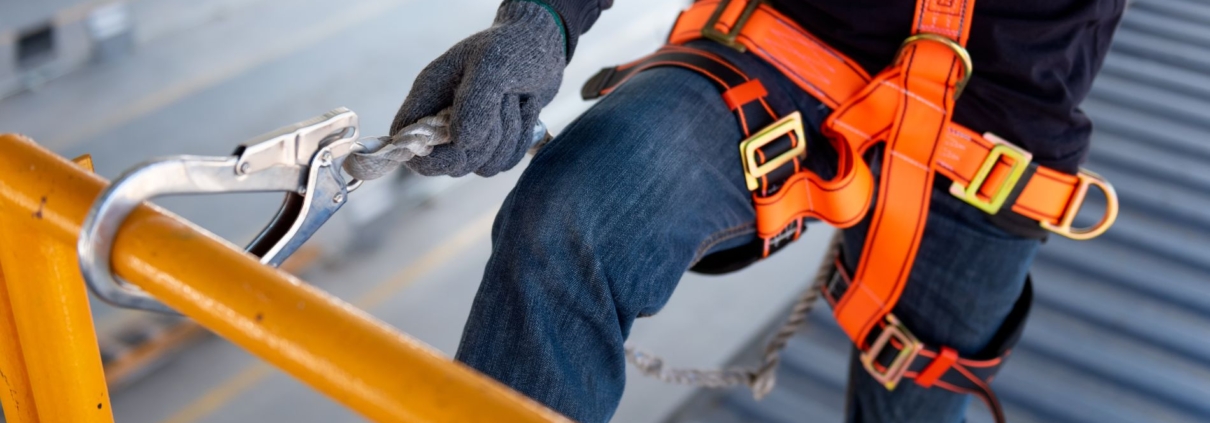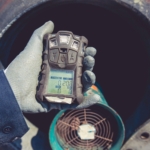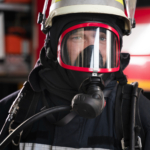Steps To Take When A Worker Is Suspended In A Harness
When a worker is hanging in a harness after a fall, time matters. Every second adds pressure to the situation and affects how well the person recovers. Knowing what to do next is key. It’s not just about cutting them loose or calling for help. It’s about being prepared, thinking clearly, and taking the right steps, fast. A suspended worker is exposed to a range of risks, from circulation problems to trauma from the fall itself. That moment demands a plan, not guesswork.
Fallen worker rescue procedures should never be learned on the spot. Having a clear idea of what to do before it happens is what makes the difference. From staying calm to securing the area and starting real rescue efforts, everyone on-site needs to know the flow. It’s not about acting like a hero. It’s about doing the job the right way so someone else gets to go home safe at the end of the day.
Stay Calm And Assess The Situation
When a worker is suspended in a harness, there’s often a mix of confusion, fear, and pressure to act. But the first move shouldn’t be to rush. It’s to pause and get your head straight. Panic only leads to poor decisions, and that can make things worse for the person in the harness and everyone else around.
Your first task is to size up the situation.
– Is the worker conscious and responsive?
– Are they in pain or showing signs of distress?
– Is there any danger around them, like moving equipment or unstable structures?
– Is there a threat of falling objects?
Keep the worker in sight and let the rest of the team know immediately. You don’t need a full debrief, just enough to alert others and trigger your set rescue plan. If your site has a formal system, now is the time to follow it.
A clear head and a quick glance around can tell you what kind of risk you’re dealing with. For example, if a worker slipped from scaffolding and ended up hanging by their harness just above a busy area, keeping people away might matter as much as helping the worker. That’s why it’s not just about reacting. It’s about thinking smart.
Once you’ve mentally mapped things out, you’re better prepared to make the next call and move forward with purpose without creating more problems than you solve.
Communicate And Secure The Area
Now that you have a sense of what’s going on, the next step is keeping two things stable: your worker and their surroundings. Start by talking to the suspended worker, even if you can’t reach them yet. Let them know help is on the way. Give short, calm instructions if needed. This reassurance can do a lot to help them stay still and safe until rescue begins.
Next, make the area safe for both the worker and the crew nearby. A messy or unstable site can turn a rescue into another emergency. Do a quick sweep for immediate hazards like:
– Loose materials that could fall
– Equipment left running
– Nearby tools or debris that someone could trip on
– Uneven or slippery ground
Keep everyone not involved in the rescue clear from the area. Whether you’re in a warehouse, on scaffolding, or mid-site, it’s better to have fewer people around. That way, trained responders can do their job faster and with less risk of mistakes.
At this point, a supervisor or site safety officer should step in to take control of the rescue. If they’re not there, notify them straight away. Coordination keeps the rescue focused. Even one person shouting the wrong thing can throw off timing or confuse the process.
So, while speed might feel urgent, safety still comes first. Clear communication and a secure area give your rescue team the best chance to act quickly and safely when it counts.
Initiate Rescue Procedures
Once the area is secure and the worker is stable, the next step is executing the actual rescue. Getting someone down safely from a height without making things worse takes planning, the right gear, and people who know their roles. Rushing at this stage can lead to dropped equipment, injury to the rescuer, or even harm the worker further.
Before beginning, double-check that your equipment is suitable and ready to use. The gear should match the height, load, and access challenge of the rescue. This includes:
– Rescue kits specific to the type of fall
– Descent or retrieval devices
– Anchor points checked for load capacity
– Back-up systems in case of failure
Approach the suspended worker with slow, steady movements. Make sure your positioning doesn’t risk another fall or make you part of the problem. Keep talking to the person the whole time if they’re still conscious. Even simple updates, quietly spoken, can help them stay mentally stable while you work.
Every rescue technique has a specific process, but the golden rule is this: limit how much the worker moves until you can support their full body weight and bring them down gently. Uncoordinated movement can shock the body, especially if it’s been hanging for more than a few minutes.
Rescue should only be carried out by trained staff. That includes knowing how to use the gear, how to stabilise the person, and what not to do. Every move during the recovery stage impacts what happens next. Get this part right and you’re one step closer to getting them the help they really need.
Provide First Aid And Medical Attention
After the rescue, the job isn’t done. The worker might look okay, but there’s often more to it beneath the surface. Suspension trauma is one of the biggest concerns when someone is hanging in a harness for too long. That’s when blood pools in the legs, which can lead to fainting or even worse complications.
Lay the worker down gently and keep them still. Don’t let them walk right away. Make sure someone trained in first aid checks them for signs of trouble like dizziness, confusion, skin discolouration, or shortness of breath. You’re not looking for everything, just what stands out, so you can report it clearly to a medical responder.
Here’s what you should focus on right after the rescue:
1. Keep the worker warm and responsive
2. Continue light communication to monitor their awareness
3. Look for unusual behaviour or signs of pain that may not be obvious
4. Follow your site’s emergency plan to call for medical help, even if the worker says they’re fine
5. Avoid giving food or drink until they’ve been cleared
Sometimes people downplay injuries because they want to wrap things up fast or feel embarrassed. Be firm but calm about keeping them still and waiting for help. It’s better to be slow and safe than rush and cause lasting damage.
Training Makes All The Difference
The success of any rescue isn’t built in the moment. It’s built through the training you’ve done long before it happens. Workers and supervisors who practise height safety and rescue planning can act with more confidence and make better decisions when things go wrong.
Learning proper techniques, understanding equipment, and getting familiar with your site’s layout can take a large chunk of stress out of a real emergency. You won’t be scrambling for gear or arguing about who’s doing what. Everyone knows their job, and steps click into place.
A good example is when a maintenance team in Perth ran regular drill sessions every winter. One afternoon, a worker slipped during a rooftop inspection and was caught by his harness. Because they knew their training inside out, the rescue team had him safely on the ground and being looked after before external help arrived.
You want that level of readiness. It doesn’t come from reading or guessing. It comes from experienced instructors walking you through real-world drills and correcting mistakes before you find yourself under pressure.
Strong Teams Keep Each Other Safe
A well-trained team isn’t just reacting to problems; they’re preventing them. When everyone knows the signs to watch for, how to operate equipment, and what action to take in a fall, there’s less confusion and more control. It’s the difference between feeling afraid and knowing you’ve got each other’s backs.
If you’re serious about fallen worker rescue, your next step should be making this part of your team’s ongoing practice. That means more than toolbox talks. It means having the hands-on experience, refresher training, and site-specific drills that keep your crew ready for whatever comes.
Having a plan matters. Knowing how to follow that plan when it’s needed, that’s what saves lives. Casual work sites, untrained teams, or guessing your way through won’t cut it. But when your crew works as one, is trained properly, and can act fast but safely, that’s when it counts the most.
Ensure your team is ready for any situation with Access Unlimited’s expert tower rescue training in Perth. Mastering the essential skills of fallen worker rescue is crucial for maintaining the highest safety standards on site. Our program is designed to prepare your crew for efficient and safe rescue operations, ensuring everyone returns safely home at the end of the day.



